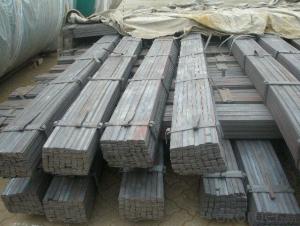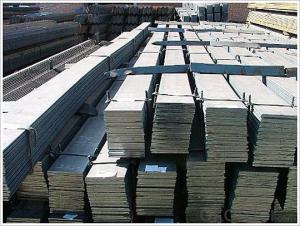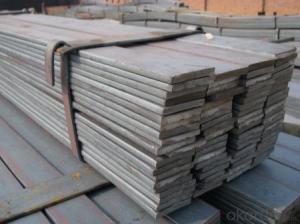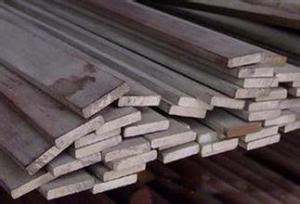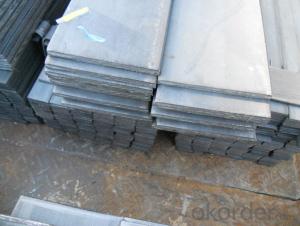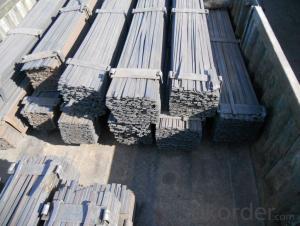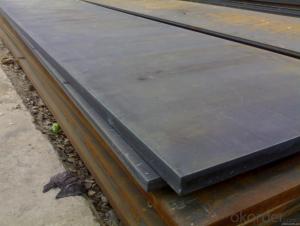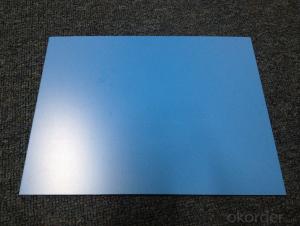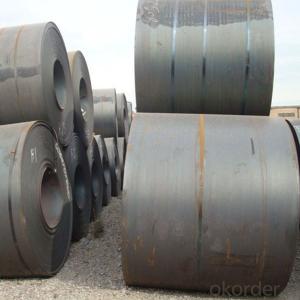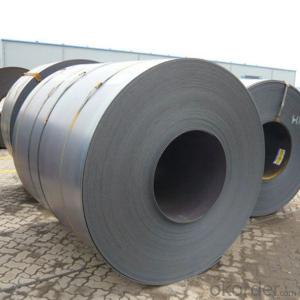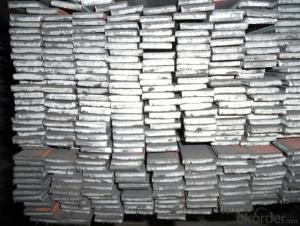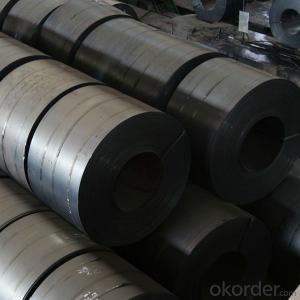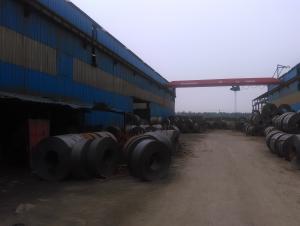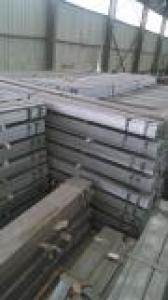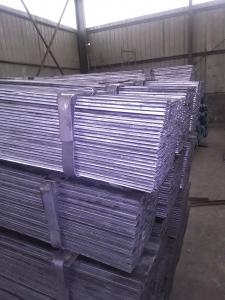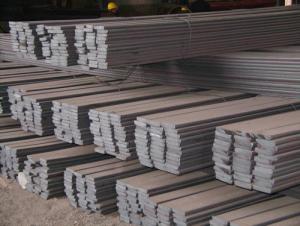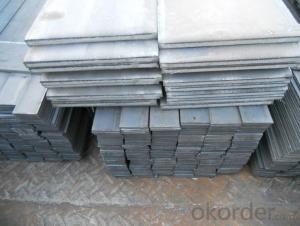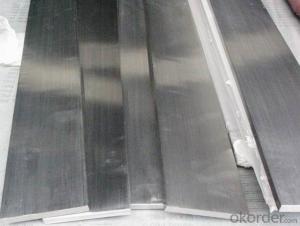HR SS400 Spring Steel With High Quality
- Loading Port:
- Tianjin
- Payment Terms:
- TT or LC
- Min Order Qty:
- 25 m.t
- Supply Capability:
- 10000 m.t/month
OKorder Service Pledge
OKorder Financial Service
You Might Also Like
Specification
Product Description:
OKorder is offering HR Spring Steel with high quality at great prices with worldwide shipping. Our supplier is a world-class manufacturer of steel, with our products utilized the world over. OKorder annually supplies products to European, North American and Asian markets. We provide quotations within 24 hours of receiving an inquiry and guarantee competitive prices.
Product Applications:
HR Spring Steel with high quality are ideal for structural applications and are widely used in the construction of buildings and bridges, and the manufacturing, petrochemical, and transportation industries.
Product Advantages:
OKorder's HR Spring Steel with high quality are durable, strong, and resist corrosion.
Main Product Features:
· Premium quality
· Prompt delivery & seaworthy packing (30 days after receiving deposit)
· Corrosion resistance
· Can be recycled and reused
· Mill test certification
· Professional Service
· Competitive pricing
Product Description:
HR Spring Steel with high quality can be divided into two types. One is carbon spring steel, and other one is alloy spring steel.
Alloy spring steel is based on carbon spring steel, by adding one or more alloying elements to improve the mechanical properties, hardenability and other properties to meet the requirement for manufacturing all kinds of spring steel.
Specification of HR Spring Steel with high quality :
-Material: 65Mn
-Standard: GB
-Type: Spring Steel
Chemical Composition:
C | Si | Mn | S |
0.63~0.65 | 0.19~0.22 | 0.98~1.10 | ≤0.01 |
P | Cr | Ni | Cu |
≤0.014 | ≤0.2 | ≤0.02 | ≤0.05 |
Mechanical Properties:
-Tensile Strength σb (MPa): 825~925
-Yield Strength σs (MPa): 520~690
-Elongation δ10(%): 14~21.5
-Percentage reduction of area: ψ (%): ≥10
-Hardness:
1, Hot rolled: 240~270HB
2, Soft state hardness of cold rolled: 190~220HB
3, Hard state hardness of cold rolled: 300~340HB
4, Heat treatment: 38~60HRC
Usage/Applications of HR Spring Steel:
-65Mn, element Mn improves hardenability. Surface decarburizing tendency is less than silicon steel. After heat treatment, the mechanical properties are better than carbon steel.
-Spring steel of this material is usually used as flat and round spring of small size, clockwork spring, spring ring, valve spring, brake spring and so on.
Packaging & Delivery of HR Spring Steel:
-Packing Detail: The products can be packed in bundles by steel wires.
-Marks: We will paint both ends of each bundle of products to make sure that it’s more convenient for customers to distinguish their products from others, besides, we will tie tag marks to the bundles with following information: company name and logo, product name, specification, material, and so on.
-Delivery Detail:
1, Delivery time: 30~45 working days after receive buyer’s T.T. or L/C.
2, Delivery status should be written in the contract. (Heat treatment or no)
Transportation:
1, The products can be delivered by bulk vessel or by container. As for container, products with the length of 6m will be loaded in 20’ container, with 9m or 12m, in 40’ container.
2, The maximum quantity of loading of container is 25 tons.
3, The products are usually transported to the nearest port from the production place.
FAQ:
Q1: Why buy Materials & Equipment from OKorder.com?
A1: All products offered byOKorder.com are carefully selected from China's most reliable manufacturing enterprises. Through its ISO certifications, OKorder.com adheres to the highest standards and a commitment to supply chain safety and customer satisfaction.
Q2: How do we guarantee the quality of our products?
A2: We have established an advanced quality management system which conducts strict quality tests at every step, from raw materials to the final product. At the same time, we provide extensive follow-up service assurances as required.
Q3: The products are invoicing on theoritical weight or on actual weight?
A3: We can do it in both manners, according to the customers' request.
Image:
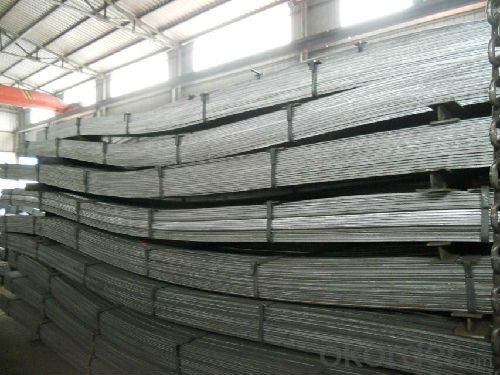
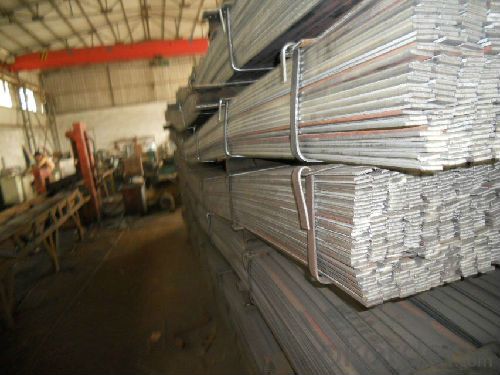
- Q: Can steel flat bars be used for making brackets or supports for transportation infrastructure?
- Yes, steel flat bars can be commonly used for making brackets or supports for transportation infrastructure due to their strength, durability, and ability to withstand heavy loads.
- Q: What are the applications of steel flat bars in construction?
- Steel flat bars have a multitude of applications in the construction industry due to their versatility and durability. These bars are widely used in various construction projects for structural support, reinforcement, and framing purposes. One of the key applications of steel flat bars in construction is their use as supports or beams. They can be used to provide additional strength and stability to structures, such as bridges, buildings, and platforms. Steel flat bars are also utilized as lintels above windows and doors, offering structural support and preventing sagging or cracking. Another common application of steel flat bars is in reinforcing concrete structures. These bars are embedded within concrete to provide tensile strength and prevent cracking under heavy loads or vibrations. They are commonly used in the construction of foundations, columns, slabs, and walls. Steel flat bars are also used for framing purposes in construction projects. They can be used as framing members for walls, ceilings, and roofs, providing a strong and rigid framework. Additionally, they can be used as braces to reinforce structures against lateral forces, such as wind or earthquakes. In addition to their structural applications, steel flat bars are also used for decorative purposes in construction. They can be used as architectural accents, handrails, or ornamental fixtures, adding aesthetic appeal to buildings and structures. Overall, the applications of steel flat bars in construction are extensive. Their strength, durability, and versatility make them an essential component in various construction projects, ensuring the stability, safety, and longevity of structures.
- Q: What are the common safety precautions when working with steel flat bars?
- Some common safety precautions when working with steel flat bars include wearing appropriate personal protective equipment such as safety glasses, gloves, and steel-toed boots to protect against potential hazards. It is important to ensure the work area is clear of any obstructions or tripping hazards. Additionally, using proper lifting techniques and equipment is crucial to avoid strain or injury. It is also important to be cautious when operating any tools or machinery, following proper safety guidelines and procedures. Regular inspection and maintenance of equipment and tools should be conducted to ensure they are in good working condition. Lastly, having proper training and knowledge of handling steel flat bars can help prevent accidents and ensure a safe work environment.
- Q: Can steel flat bars be used in the manufacturing of HVAC systems?
- Certainly! HVAC systems can utilize steel flat bars in their manufacturing process. Steel is widely employed in HVAC systems owing to its robustness, durability, and ability to withstand corrosion. The utilization of steel flat bars extends to numerous HVAC components, including brackets, supports, and frames. These bars offer stability and bolster the system, guaranteeing its optimal operation. Furthermore, steel flat bars can be easily tailored and fabricated to meet precise design specifications, rendering them suitable for diverse HVAC system configurations.
- Q: Can steel flat bars be used for fencing?
- Yes, steel flat bars can be used for fencing. They are commonly used as fence posts or horizontal rails in various types of fencing applications. Steel flat bars are durable, strong, and resistant to weathering, making them suitable for creating sturdy and long-lasting fences.
- Q: What is the typical thickness range of steel flat bars?
- The typical thickness range of steel flat bars can vary, but it is generally between 1/8 of an inch to 1 inch.
- Q: How do steel flat bars compare to granite flat bars?
- Steel flat bars and granite flat bars have several differences that should be considered when comparing them. Firstly, steel flat bars are made from a durable and strong material, which makes them highly resistant to bending and breaking. Granite, on the other hand, is a natural stone that is known for its strength and durability. However, it is not as strong as steel and may crack or chip under heavy loads or impacts. Secondly, steel flat bars are more versatile in terms of their applications. They can be easily cut, welded, and shaped to fit specific requirements. Steel flat bars are commonly used in construction, manufacturing, and fabrication industries due to their malleability. Granite flat bars, on the other hand, are primarily used in the construction and design of countertops, flooring, and other architectural elements. Another important factor to consider is the aesthetic appeal. Steel flat bars have a sleek and industrial look, which makes them suitable for contemporary designs. Granite flat bars, on the other hand, have a natural and timeless beauty. They are available in various colors and patterns, making them a popular choice for adding elegance and sophistication to interior and exterior spaces. In terms of maintenance, steel flat bars require regular cleaning and occasional rust prevention measures to maintain their appearance and prevent corrosion. Granite flat bars, on the other hand, are relatively low maintenance. They are naturally resistant to stains, scratches, and heat, making them easy to clean and maintain. Lastly, the cost is an important consideration. Steel flat bars are generally more affordable than granite flat bars. While the price of granite varies depending on the quality and availability, it is generally more expensive than steel due to its natural sourcing and fabrication process. In summary, steel flat bars and granite flat bars have different strengths and weaknesses. Steel offers durability, versatility, and affordability, making it suitable for various applications. Granite, on the other hand, provides natural beauty, strength, and low maintenance, making it an excellent choice for adding elegance to architectural designs. Ultimately, the choice between steel and granite flat bars depends on the specific requirements, budget, and desired aesthetic of the project.
- Q: How do steel flat bars compare to other types of steel sections?
- Steel flat bars, known for their strength and durability, have a larger surface area due to their flat shape. This results in better load distribution and resistance to bending and twisting, making them ideal for construction, industrial machinery, and transportation infrastructure. Another advantage of steel flat bars is their ease of fabrication and customization. They can be easily cut, welded, and shaped to meet specific design requirements. This makes them suitable for building frameworks, supports, decorative elements, and furniture. Furthermore, steel flat bars are cost-effective compared to other steel sections. They are more affordable than I-beams or angles, making them popular for projects with budget constraints or when large quantities of steel are needed. In terms of versatility, steel flat bars come in various sizes, thicknesses, and grades. They can be used as structural elements, bracing, connectors, or as a base for other components. Their simple design also makes them easy to handle and install, saving time and labor costs. However, it is important to note that steel flat bars may not be suitable for all applications. Their flat shape may limit their load-bearing capacity compared to specialized steel sections like channels or hollow sections. Additionally, their exposed edges may be prone to corrosion, requiring regular maintenance. Overall, steel flat bars provide a combination of strength, versatility, and cost-effectiveness that makes them a popular choice in various industries. They are reliable and efficient options for construction and manufacturing projects, with the ability to withstand heavy loads, ease of fabrication, and affordability.
- Q: Are steel flat bars commonly used in the construction of industrial buildings?
- Yes, steel flat bars are commonly used in the construction of industrial buildings. Steel is a versatile and durable material that is widely used in construction due to its strength and ability to withstand heavy loads. Flat bars, in particular, are popular in industrial buildings because they offer a stable and even surface for structural support, as well as for framing and reinforcing purposes. They are often used as beams, columns, and braces, providing essential structural integrity to the building. Additionally, steel flat bars are easy to work with and can be customized to meet specific design requirements, making them a preferred choice in industrial construction projects.
- Q: What are the different grades of steel flat bars?
- There are several different grades of steel flat bars available in the market, each with its own specific properties and applications. Some common grades include: 1. Mild Steel: This is the most basic grade of steel flat bar, also known as low carbon or plain carbon steel. It has a relatively low amount of carbon content, typically around 0.05% to 0.25%. Mild steel flat bars are widely used in general construction, fabrication, and manufacturing due to its affordability and ease of machining. 2. High Carbon Steel: As the name suggests, high carbon steel flat bars have a higher carbon content, usually ranging from 0.60% to 1.0%. This grade of steel offers excellent strength and hardness, making it suitable for applications that require high wear resistance, such as tools, blades, and springs. 3. Alloy Steel: Alloy steel flat bars are made by adding various alloying elements, such as manganese, chromium, nickel, or molybdenum, to improve specific properties. These steels exhibit enhanced strength, toughness, and corrosion resistance compared to mild or high carbon steel. Alloy steel flat bars are commonly used in the automotive, aerospace, and construction industries. 4. Stainless Steel: Stainless steel flat bars are corrosion-resistant steels that contain a minimum of 10.5% chromium. They are available in various grades, such as 304, 316, and 430, each with different levels of corrosion resistance and mechanical properties. Stainless steel flat bars are widely used in applications where resistance to rust and staining is critical, such as kitchen equipment, architectural elements, and medical devices. 5. Tool Steel: Tool steel flat bars are specifically designed for the production of tools, dies, and molds. They offer high hardness, wear resistance, and toughness, making them suitable for cutting, shaping, or forming materials. Tool steel grades include H13, D2, and O1, each with unique properties that make them suitable for different tooling applications. It is important to consider the specific requirements of your project or application when choosing the grade of steel flat bar, as different grades offer varying levels of strength, hardness, corrosion resistance, and machinability.
Send your message to us
HR SS400 Spring Steel With High Quality
- Loading Port:
- Tianjin
- Payment Terms:
- TT or LC
- Min Order Qty:
- 25 m.t
- Supply Capability:
- 10000 m.t/month
OKorder Service Pledge
OKorder Financial Service
Similar products
Hot products
Hot Searches
Related keywords
